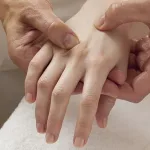Shocking Revelation in 2024: Microplastic in Babies Exposes Alarming Truth – A Disturbing Journey of Discovery Unveiled!

The Unseen Threat: Microplastics and Infants.
Microplastics, minuscule plastic particles measuring less than five millimeters, have quietly infiltrated the lives of infants, posing an unseen threat to their health. This revelation, though recent, uncovers a timeline of exposure that prompts questions about the long-standing presence of these microscopic invaders. From the air infants breathe to the products they use, microplastics have become an integral, yet largely unnoticed, part of their environment.
The discovery of microplastics in infants sparks an urgent inquiry into the sources and pathways of this exposure. Researchers are diligently unraveling the mystery, scrutinizing everyday items like baby bottles and toys as potential carriers. Understanding when and how this exposure began is crucial to comprehending the true extent of the issue and its potential consequences for the youngest members of society.
Examining the timeline of infants’ exposure reveals a disconcerting reality—microplastics may have been present in their environment for an extended period. This longstanding exposure adds complexity to the challenge of mitigating the impacts and raises questions about the cumulative effects on infant health. The timeline also underscores the need for proactive measures to address and rectify this environmental concern.
The implications of microplastics in infants extend beyond immediate health concerns. Researchers are delving into the potential long-term effects on development, immunity, and overall well-being. This exploration brings to light the intricate interactions between these tiny particles and the delicate systems within a baby’s body, highlighting previously overlooked aspects of pediatric health.
As the unseen threat becomes apparent, a collective call to action arises. From parents to policymakers, industries to environmental advocates, addressing microplastics in infants requires united efforts. Raising awareness, advocating for sustainable alternatives, and implementing safer manufacturing practices are integral components of a comprehensive strategy to protect the well-being of the youngest generation.
In short, the presence of microplastics in infants prompts a reevaluation of our understanding of environmental and pediatric health. This unseen threat, though microscopic, demands immediate attention and concerted efforts to safeguard the vulnerable population, ensuring a healthier future for generations to come.
When Did We Become Exposed?

In 2020, researchers from the University of New Mexico unearthed a disconcerting revelation that marked a significant milestone in the study of microplastics. For the first time, microplastic particles were discovered in the placentas of unborn babies, raising profound concerns about the potential implications for fetal health. Despite the unknown health impact of these microplastics within the body, the possibility of long-term damage or interference with the developing immune system of the fetus is a cause for serious consideration.
The discovery unveiled the pervasive presence of microplastics on both the fetal and maternal sides of the placenta, as well as within the membrane where the fetus develops. Most notably, these microplastics were found to be approximately 10 microns in size, small enough to be transported through the bloodstream. The origin of these particles, primarily dyed in shades of blue, red, orange, or pink, suggests a potential connection to packaging, paints, cosmetics, or personal care products.
Lead researcher Antonio Ragusa coined the term “cyborg baby” to describe the amalgamation of biological and inorganic entities observed in the placenta. This vivid metaphor underscores the unsettling fusion of natural and synthetic elements in a space crucial for fetal development.
The revelation prompted a call for further research to delve into the potential consequences of these plastic particles in the placenta. The concern lies in understanding whether microplastics trigger immune responses or release toxic contaminants that could adversely affect the fetus. This underscores the importance of ongoing studies to comprehensively assess the implications and potential risks associated with the presence of microplastics in such a critical prenatal environment.
This unsettling discovery not only sheds light on the vulnerability of unborn babies to the pervasive issue of microplastics but also underscores the urgent need for heightened awareness, research, and potential interventions to protect the health of the most defenseless members of our population. The impact of this revelation extends beyond individual cases, highlighting the broader issue of microplastic contamination and its far-reaching consequences on our environment and the future generations it sustains.
The Disturbing Effects on Infant Health
Where Does the Danger Lurk?
The peril associated with microplastics extends into various realms, presenting a multifaceted threat that infiltrates different areas of our lives.

Placenta: Unseen Intruders in the Sanctuary of Life The revelation from the University of New Mexico study uncovered a disconcerting truth—the presence of microplastic particles in the placentas of unborn babies. This delicate organ, once considered a sanctuary for fetal development, now harbors tiny particles capable of causing potential long-term damage or influencing the immune system’s development in the fetus.
Bloodstream: Silent Circulation of Microscopic Threats Microplastics, with their diminutive size, have the capability to traverse the bloodstream. This means that these minuscule particles can circulate throughout the body, raising concerns about their potential impact on various organs and systems. The silent circulation of these microscopic threats adds complexity to the challenge of understanding and mitigating their effects.
Source of Exposure: Everyday Items Concealing a Hidden Peril The origin of these microplastics is traced back to commonplace items like packaging, paints, cosmetics, or personal care products. Mundane encounters with everyday items may unknowingly contribute to our exposure, emphasizing the pervasive nature of the threat that lurks in seemingly innocuous aspects of our daily lives.
Health Implications: Uncharted Territory of Potential Consequences While the health impact of microplastics remains uncertain, the presence of potentially harmful plastic particles in the placenta raises legitimate concerns. Researchers stress the imperative need for further studies to unravel the intricacies of whether microplastics trigger immune responses or release toxic contaminants, delving into the uncharted territory of potential consequences for human health.
In summation, the danger of microplastics is deeply rooted in their pervasive presence, potential health effects, and their insidious ability to infiltrate even the most vulnerable parts of our bodies, such as the placenta of unborn babies. This multifaceted threat underscores the urgency for continued research, awareness, and proactive measures to safeguard not only our current well-being but also the health of generations to come.
What Happens Inside the Tiny Bodies?
the intricate world within those tiny bodies—the potential health consequences and implications of microplastics in infants.
Babies can inadvertently encounter microplastics through various channels, including contaminated food, water, and even breast milk. These particles, small enough to navigate the digestive system effortlessly, pose a potential threat. Moreover, the delicate and permeable baby skin allows for absorption, offering an additional pathway for microplastics to enter the infant body.
Once within the body, microplastics embark on a journey through the bloodstream, reaching diverse organs, tissues, and systems. Even the placenta, once considered a protective barrier, succumbs to the infiltration of microplastics, challenging previously held assumptions about its impenetrability.
Microplastics wield the potential to induce various health effects in infants. Triggering inflammatory responses, they become implicated in chronic inflammation associated with developmental disorders. Furthermore, some microplastics contain endocrine-disrupting chemicals, raising concerns about potential impacts on growth, metabolism, and overall health. The immune system’s response to microplastics as foreign invaders may influence the developing immune system, while their ability to cross the blood-brain barrier raises neurological concerns. Over time, the accumulation of microplastics from birth could lead to chronic health issues, adding a layer of complexity to the potential consequences.
Despite advancements, critical research gaps persist. Comprehensive data on exact microplastic levels in infants remain elusive. The coexistence of microplastics with other pollutants introduces a layer of uncertainty regarding their combined impact. Longitudinal studies are imperative to uncover the lifelong effects of early exposure to these pervasive particles.
Addressing this intricate issue requires proactive measures. Reducing plastic use, especially in baby products, and opting for natural materials stand as preventive steps. Safe feeding practices, ensuring uncontaminated food and water sources, are crucial in minimizing ingestion. Supporting ongoing research on microplastics’ health effects and advocating for stricter regulations become imperative actions to safeguard the health of the youngest members of our society.
In summary, the presence of microplastics in infants’ bodies presents a multifaceted issue with potential far-reaching consequences. As we navigate this journey of discovery, prioritizing the health of the tiniest members of our society emerges as a paramount responsibility.
The Silent Invader: How Microplastics Sneak Into Baby Products
Which Products Pose the Greatest Risk?
The silent invader, microplastics, infiltrates baby products, posing potential risks to our little ones. Baby bottles and pacifiers made from plastic may contain these microscopic particles, increasing the likelihood of ingestion or absorption. Opting for glass or silicone alternatives can mitigate this risk by minimizing the release of microplastics.
Powdered baby formula containers, often made of plastic, pose another risk as microplastics could leach into the mixture during preparation. Using glass containers or transferring formula to glass jars after purchase provides a safer alternative. Disposable baby wipes and diapers, crafted from synthetic materials, may shed microplastics during use. Choosing eco-friendly, biodegradable options or turning to cloth diapers addresses this concern sustainably.
Baby clothing and bedding, crafted from synthetic fabrics, shed microfibers. Opting for natural fibers like organic cotton, bamboo, or wool reduces the risk of microplastics release. Plastic toys and teethers containing additives that break down into microplastics pose a risk, especially when babies put these items in their mouths. Choosing BPA-free, silicone, or wooden alternatives provides safer options.
Other everyday items, such as baby bath products in plastic packaging, carry the risk of microplastics presence. Choosing plastic-free or refillable packaging and opting for natural, organic baby care products helps mitigate this risk. Feeding utensils and sippy cups made from plastic can release microplastics when exposed to hot liquids or acidic foods. Choosing stainless steel, glass, or silicone alternatives enhances safety and durability.
Baby food pouches made from layers of plastic present a risk of releasing microplastics when heated or squeezed. Preparing homemade baby food in glass jars or other non-plastic containers offers a safer alternative. Foam mats and changing pads, often containing microplastics, can be replaced with natural rubber or fabric mats, washed regularly to minimize particle release. Lastly, acknowledging the environmental impact of plastic items used for babies is crucial. Making informed choices not only protects our little ones but also contributes to mitigating the overall plastic pollution crisis.
In summary, understanding the materials in baby products and opting for safer alternatives is paramount in reducing infants’ exposure to microplastics.
How Can Parents Protect Their Little Ones?
Embarking on the journey of parenthood opens the door to countless decisions, and among them is the choice of materials that surround our little ones. Opting for baby products crafted from natural materials such as glass, silicone, stainless steel, and wood can significantly reduce the likelihood of exposure to harmful elements. Similarly, when it comes to clothing and bedding, selecting items made from organic cotton, bamboo, or wool minimizes the risk associated with synthetic fabrics that tend to shed microfibers.
Plastic containers play a significant role in a baby’s daily life, from storing formula to feeding utensils. Choosing glass containers for powdered baby formula and embracing glass or silicone baby bottles and pacifiers can be a pivotal step in avoiding plastic exposure. Additionally, eco-friendly choices like cloth diapers over disposable ones and biodegradable, synthetic-free wipes contribute not only to a healthier environment but also to reduced plastic waste.
Empowering parents with knowledge about safer alternatives and advocating for increased awareness are crucial steps. Encouraging the use of toys made from BPA-free, silicone, or wooden materials, and opting for plastic-free packaging in baby care products, demonstrates a commitment to safeguarding little ones. Furthermore, practicing safe feeding habits, avoiding hot liquids in plastic utensils, and reducing overall plastic use in baby care items contribute to creating a safer environment for our precious infants.
In short, each informed choice a parent makes becomes a step towards creating a nurturing and secure space for their little ones. By embracing these practical strategies and supporting research and innovation in plastic-free alternatives, parents can play an active role in minimizing the threat of harmful materials and providing a healthier future for their children.
Environmental Impact and the Future
What Does This Mean for Our Planet’s Future?
Following are the broader environmental implications and the urgency of addressing this issue.
Ecosystem Disruption: Microplastics weave into the fabric of ecosystems, infiltrating oceans, freshwater bodies, soil, sediments, and water. Their presence disrupts marine life, impacting the feeding behavior, health, and reproductive success of fish, seabirds, and marine mammals. The repercussions extend through the entire food chain as microplastics traverse from plankton to larger organisms.
Chemical Contamination: Acting as sponges, microplastics absorb toxic chemicals like pesticides, heavy metals, and persistent organic pollutants. When ingested by organisms, these chemicals are released, posing potential harm to wildlife and humans alike.
Climate Change Connection: Microplastics contribute to climate change by releasing greenhouse gases like methane and ethylene as they break down. The production and disposal of plastics during their lifecycle also emit greenhouse gases, linking microplastics to broader environmental concerns.
Unknown Health Effects: The health consequences of microplastics are still unfolding, with uncertainties surrounding their impact on human health. Chronic exposure raises concerns about inflammation, immune system dysfunction, and other potential health issues.
Global Scale: Ubiquitous in their distribution, microplastics are found everywhere, from remote Arctic ice to deep ocean trenches and pristine mountain lakes. The global prevalence of microplastics underscores the urgency of addressing this pervasive issue.
Waste Management Challenge: Managing plastic waste is already a colossal challenge, and microplastics exacerbate this problem. Proper disposal, recycling, and reduction efforts are crucial in addressing the environmental impact of these minute particles.
Policy and Regulation: Governments play a pivotal role in addressing the microplastic crisis by enacting stricter regulations on plastic production, use, and disposal. Banning single-use plastics and promoting circular economy models are essential steps toward effective policy solutions.
Innovation and Research: Investing in research to comprehend the impact of microplastics and developing innovative solutions, such as biodegradable plastics and filtration systems, are critical in mitigating their environmental impact.
Individual Responsibility: At the individual level, reducing plastic consumption and advocating for responsible plastic use are essential steps. Educating others about the broader implications of microplastics encourages collective action.
Time Is of the Essence: We stand at a critical juncture where immediate action is imperative. The future of our planet hinges on addressing the pervasive issue of microplastics and safeguarding ecosystems for generations to come.
Who Holds Responsibility?
The roles of individuals, industries, and policymakers in tackling the microplastic crisis affecting our babies:
Individual Responsibility: The duty to combat the issue of tiny plastic particles lies with each individual. Consumers can make impactful choices by reducing plastic consumption, practicing responsible recycling, and spreading awareness about the hazards associated with these minuscule invaders. Education plays a pivotal role in driving informed choices that collectively diminish the impact of these pollutants.
Industries and Manufacturers: Industries play a crucial role in mitigating pollution caused by these particles. Prioritizing sustainable materials in product design and adopting practices that minimize the release of these particles are essential steps. Responsible waste management, including substantial investments in recycling and circular economy solutions, aligns industries with environmentally conscious practices.
Government and Policy Makers: Governments bear a significant responsibility in addressing this crisis. Enacting and enforcing stricter regulations on plastic production, usage, and disposal are pivotal actions. Measures such as bans on single-use plastics, incentives for eco-friendly alternatives, and extended producer responsibility contribute to comprehensive solutions formulated at the policy level.
Scientific Community and Research: The scientific community shoulders the responsibility of continual research into the impact of these particles on health and ecosystems. Ongoing studies contribute to a deeper understanding of the issue. Innovations in biodegradable alternatives and filtration technologies are critical outputs of scientific endeavors, providing tangible solutions for mitigating the effects.
Global Collaboration: Addressing this issue necessitates a global collaboration effort. International agreements and joint initiatives facilitate coordinated actions across borders. Organizations, through awareness campaigns, can mobilize collective action, emphasizing the interconnectedness of the issue and the need for a unified response.
Urgency: Emphasizing the urgency of addressing this problem is paramount. Delaying action only exacerbates the issue. Recognizing the immediate need for collective efforts underscores the responsibility we bear for the planet we pass on to future generations. In summary, combating these invaders requires a collective acknowledgment of shared responsibility and a collaborative commitment to effective solutions.
Conclusion:
In our exploration of the hidden threat woven into our daily lives, we find ourselves at the nexus of shared responsibility. The consequences of our choices, whether as individuals, industries, governments, or global organizations, ripple across the interconnected web of our environment. As consumers, our decisions hold the power to shape a future where sustainability prevails over silent invaders.
Industries, as architects of products shaping our daily interactions, are pivotal in steering away from the perilous path of pollutants. Prioritizing sustainable materials and embracing practices that minimize the release of these particles propel us towards a more responsible and eco-conscious existence. Responsible waste management becomes the linchpin, intertwining industries with the commitment to preserve our delicate ecosystems.
Governments stand as custodians of our collective well-being, wielding the authority to enact and enforce regulations that safeguard the planet. The urgency is undeniable, calling for bans on harmful practices, incentives for sustainable alternatives, and the infusion of accountability through extended producer responsibility.
The scientific community’s commitment to ongoing research unravels the layers of complexity surrounding these tiny invaders, paving the way for innovative solutions. The urgency of global collaboration echoes loudly, urging international alliances and collective efforts to fortify our defenses against this ubiquitous threat.
As we navigate the critical juncture we find ourselves in, the time is now to take a collective stand. The responsibility we bear for the planet resonates in every choice we make. Through awareness, education, and a unified commitment to sustainable practices, we can shape a future where the legacy we leave is one of stewardship, not silent surrender. Our actions today determine the landscape for future generations—a landscape sculpted by our collective responsibility and commitment to a thriving, resilient planet.
FAQs:
Q: Why should I be concerned about the tiny particles mentioned in the article?
Answer: The particles discussed in the article have far-reaching consequences on both our environment and health. Understanding their impact empowers individuals to make informed choices that contribute to a sustainable and healthier future.
Q: What role do industries play in addressing the issue described?
Answer: Industries play a pivotal role in shaping the trajectory of environmental impact. Prioritizing sustainable materials, responsible waste management practices, and embracing eco-friendly alternatives are crucial steps in mitigating the effects of these pollutants.
Q: How can governments contribute to addressing the environmental concerns outlined in the article?
Answer: Governments hold the key to enacting and enforcing regulations that promote responsible practices. This includes measures like banning harmful materials, incentivizing sustainable alternatives, and holding producers accountable for their environmental footprint.
Q: How does ongoing scientific research contribute to solving the issue discussed?
Answer: Ongoing scientific research provides valuable insights into the complexities surrounding these particles. Innovations arising from such research, including biodegradable alternatives and advanced filtration technologies, pave the way for effective solutions.
Q: What can individuals do to play their part in combating the issue highlighted in the article?
Answer: Individuals can make impactful choices in their daily lives. This includes reducing plastic consumption, practicing responsible recycling, and raising awareness about the environmental implications of their choices. Small, informed actions collectively contribute to a more sustainable future.













